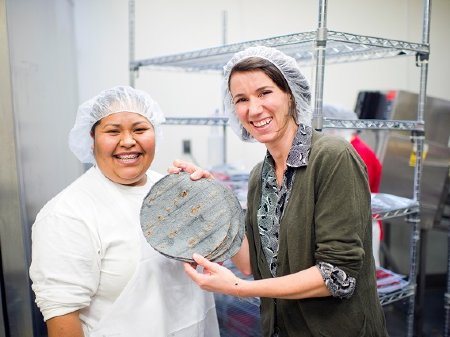I hoped for a minute that she was parodying the whole eternal youth myth. But no, the supermodel was just ridiculing the old.
I am not privy to the thought processes of supermodels (thank God), and I cannot for the life of me think what was running through Heidi Klum’s head when she came up with the idea that dressing as an old woman was an amusing concept for Halloween. Heidi is well-known for going the full nine yards on All Hallows’ Eve. She’s been Clive Barker’s Hellraiser (or Gunther von Hagens’ flayed body, depending on your cultural references), the Hindu goddess Kali (managing to offend an entire religion) and now she’s given us what currently terrifies the western world beyond all reason – age.
Yes, there are cultural differences at play here – dressing up for Halloween in the US does not necessarily mean witches, vampires and Frankenstein – but it’s hard to see this stunt as anything other than ill-judged and offensive. There is a fine line here and Klum has crossed it.
Once the initial “red mist” had dissipated and I started to analyse my reaction, I’ve concluded it’s the fact that she played it straight and gone to a great deal of trouble to do so. This is not the slightly more acceptable “comedy crone” that we’re used to seeing and can tolerate – if we can’t laugh at stress incontinence and sagging bosoms we’re screwed. No, the problem for me is that it feels frankly insulting to quick fix a look that most of us are working hard to achieve over several decades. I’m not joking – take pride in the battle scars life leaves. Lines, wrinkles, veins, scars are all badges of survival – signs of a life lived. How dare Heidi Klum make light of that. As several people pointed out when I started on a rant this morning – there are those who have gone too soon who would have been very happy to embrace a wrinkled and stooped old age.
I then began to wonder whether she was trying to subvert the whole supermodel eternal youth myth. Perhaps she was saying something profound about all of us heading the same way. Something like “age is compulsory” or perhaps “life is terminal”. But after reading her comments on Twitter, such as “Little old me” – I decided I was crediting her with too much existential angst.
No, it is quite simply that making herself into an old woman for an evening is meant to be funny – not ironic, not an indication of the inner terror of a young and beautiful woman, not witty or making a point, it is purely to ridicule the old and have a good laugh at their expense. There is a serious discussion beginning on the subject of positive ageing and positive representations of age. I’ve been to two conferences in the last two weeks on the subject. Both were fascinating, stimulating and reassuring. What baffles me is that neither were rammed to the rafters – there seems to be some sort of apathy among older people about tackling their own future and status. Perhaps they think if they ignore it, it will stop, like ignoring a child having a tantrum. Or perhaps it’s a generational thing and they feel it’s impolite to make a fuss.
Unless a fuss is made there is a real danger that they (we) will find themselves negated still further to the point of oblivion. Older people, and I include myself at 58, must stand up and be counted, and protest against ageist nonsense such as this. Younger generations must be allowed to see positive representations of age and older people, not stereotypes and caricatures. To allow the current situation to continue is to stoke the fires of ageism and isolation of older generations. What are older women used for in the advertising world? Anti-ageing beauty products (usually heavily airbrushed or shown on 30-year-old models), medical products and walk-in baths: I’ll happily bore the tits off anyone who wants to talk to me about the lack of positive imagery in the media. Which might be rude of me to say so, but I’m still not nearly as rude as Heidi Klum.
By Invisible Woman











 I’d been in the same room as
I’d been in the same room as  Helen’s barely older than me, but the amount she’s achieved in her career to date is utterly inspiring. She’s already established herself as a very successful physicist and oceanographer, working in Cambridge, Toronto, Los Alamos National Lab, Scripps in San Diego and Rhode Island, before moving to Southampton University.
Helen’s barely older than me, but the amount she’s achieved in her career to date is utterly inspiring. She’s already established herself as a very successful physicist and oceanographer, working in Cambridge, Toronto, Los Alamos National Lab, Scripps in San Diego and Rhode Island, before moving to Southampton University.


 Elizabeth is another inspiring lady with ties to Bristol, where I live and study. She was born here, before at age 11, moving with her family to the USA in 1832. There, she would become the first woman in USA to be awarded a medical degree, by the Geneva Medical College in upstate New York.
Elizabeth is another inspiring lady with ties to Bristol, where I live and study. She was born here, before at age 11, moving with her family to the USA in 1832. There, she would become the first woman in USA to be awarded a medical degree, by the Geneva Medical College in upstate New York. A Passion For Science is published on October 15, to coincide with Ada Lovelace Day. All profits will go towards supporting Ada Lovelace Day and the
A Passion For Science is published on October 15, to coincide with Ada Lovelace Day. All profits will go towards supporting Ada Lovelace Day and the 



